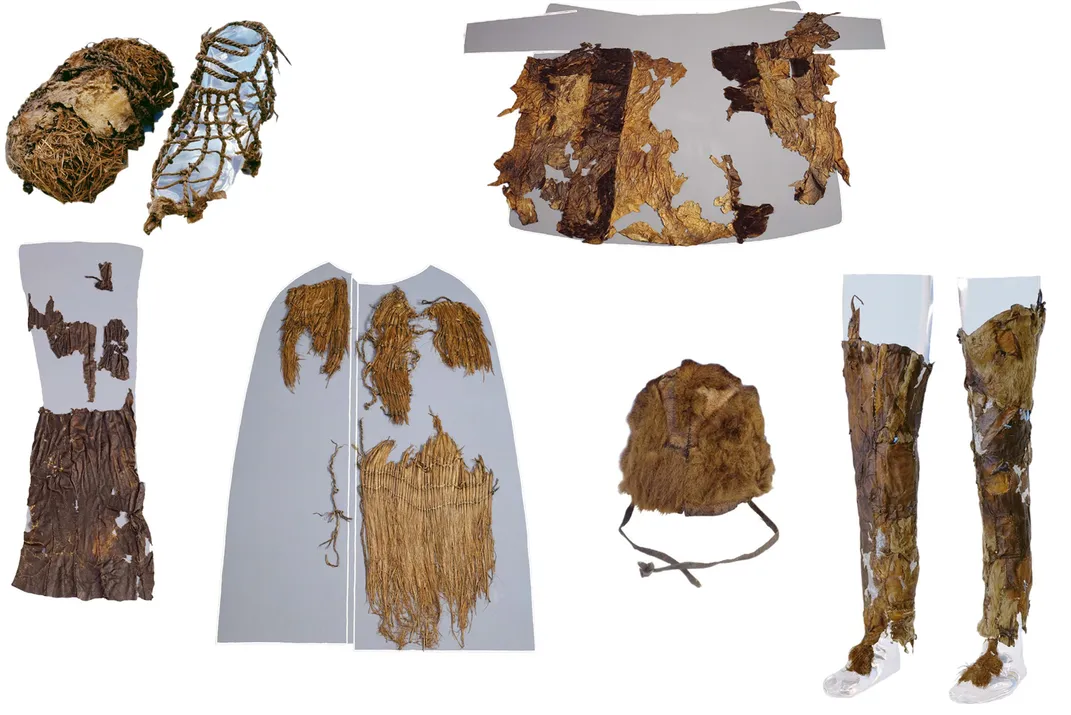DNA Analysis Reveals What Ötzi the Iceman Wore to His Grave
He rocked surprisingly complex fashion for the Copper Age
/https://tf-cmsv2-smithsonianmag-media.s3.amazonaws.com/filer/96/19/9619d92c-2a12-48de-bbca-9f52592078cf/otzi_reconstruction.jpg)
Since 1991, when the 5,300-year-old mummy commonly known as Ötzi was discovered atop a mountain in the Italian Alps, researchers have studied every inch of his remarkably preserved remains. Scientists have uncovered hints as to what he ate, how he lived, diseases he suffered from and even how he died.
While Ötzi’s frozen body has provided a wealth of knowledge about the lives of ancient Europeans, there are still many limits to what researchers can learn about him. Of particular interest is the species of animals that lent their hides for Ötzi to wear. After being frozen in ice for millennia, the hair and leather samples are too damaged for archaeologists to analyze with standard DNA techniques. But using new analysis methods, scientists have unlocked a trove of information from the Copper Age man. They describe their results in a study published today in the journal Scientific Reports.
“Just based on the hair or just based on the type of leather, it’s not easy sometimes to come down to the species level,” microbiologist Frank Maixner, one of the study’s authors, tells Smithsonian.com. “It was clear to have a little bit more insight, we had to go for the DNA.”
In order to learn more about Ötzi’s fashion choices, Maixner and his colleagues at the European Academy of Bozen/Bolzano (EURAC) used a form of DNA analysis that relies on markers found in mitochondrial DNA. While most DNA is stored in chromosomes within cells, mitochondria contain a tiny piece of their own DNA. It’s a small fraction of the total human genome, but for the scientists, it was enough to pinpoint several animals that Ötzi turned into specific pieces of clothes.

Ötzi’s shoes are made from cattle leather, which Maixner believes may have been chosen because it is hardier than other materials. Meanwhile, the mummy’s black-and-white-striped coat is made from sheep, which would have provided Ötzi with the most warmth compared to other available types of leather. His attire is also crafted from non-domesticated animals, including a deerskin quiver and a bearskin hat. Not only does it appear that the different materials were chosen with a specific purpose in mind, but they were also repaired using the same kind of materials instead of whatever leathers Ötzi had lying around.
“It’s not chaotic,” Maixner says. “It’s really ordered, there’s a structure, there’s a fashion, in my eyes.”
Now that Maixner and his team have tested this method for analyzing Ötzi, they hope to use it to test other materials found with the mummy without contaminating it or further damaging it. They also hope to find a sample that still contains nuclear DNA, which will allow for an even more detailed molecular analysis of the iceman’s body and his belongings.
"It’s a nice study [showing] how far we can get with this modern technique," Maixner says. "We do not need much sample material, and we can really retrieve such interesting information. We just have to not forget that we can get even further into the details."